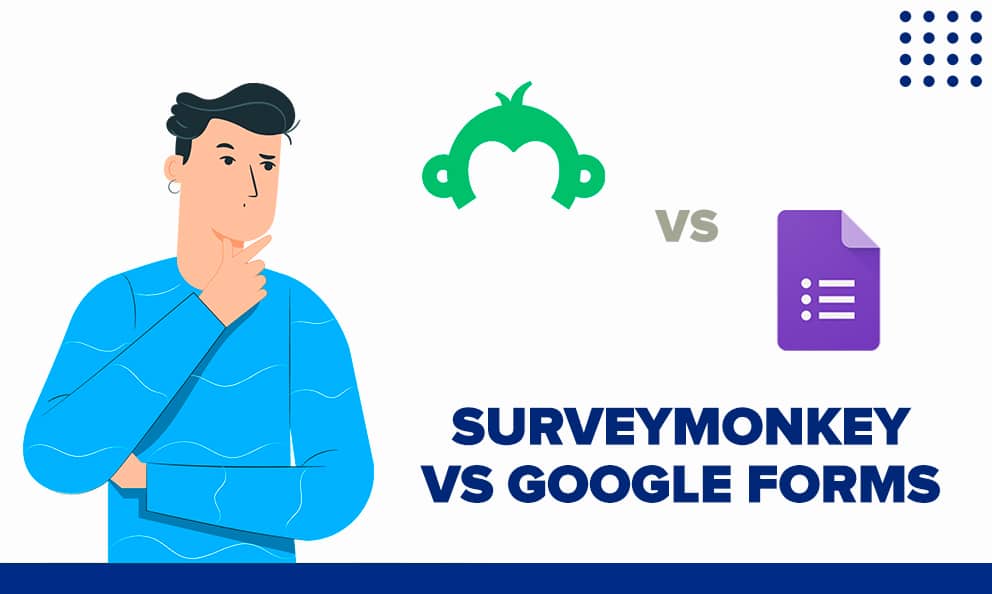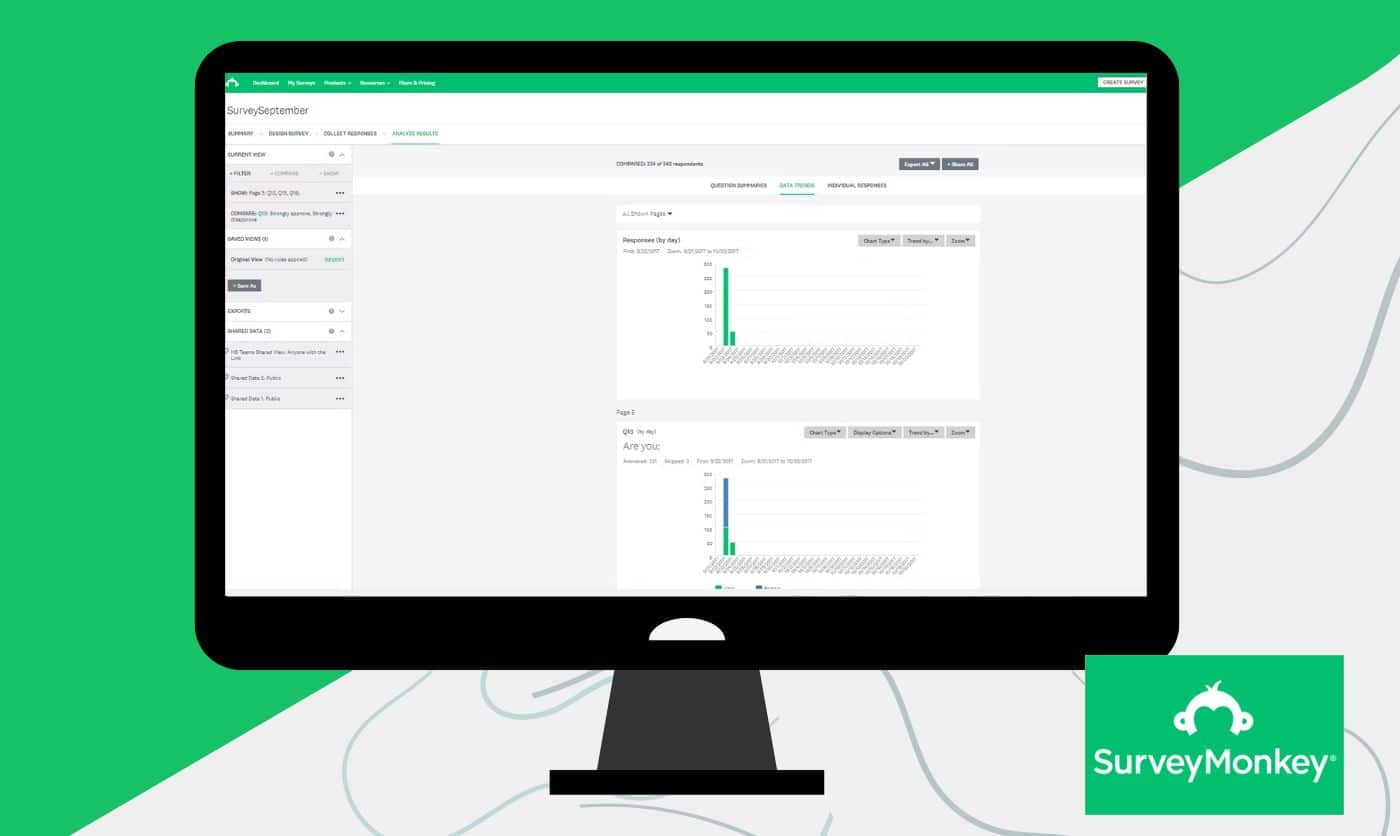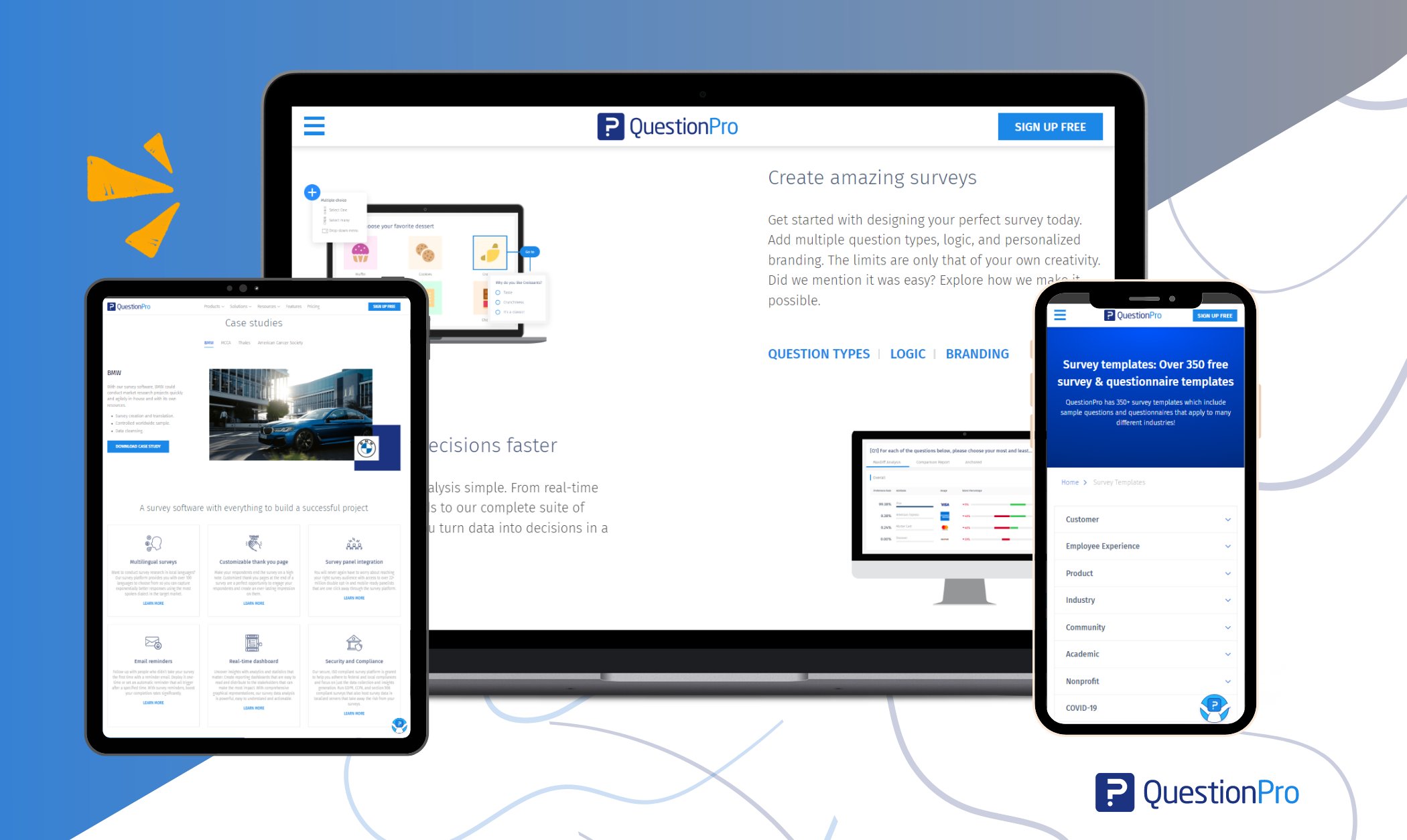
Are you undecided about which platform to choose for your surveys and forms? Don’t worry, we’ve analyzed two popular competitors to make your decision easier. In this detailed comparison of SurveyMonkey vs Google Forms, we invite you to discover the winner.
Both platforms have their strengths and weaknesses, each catering to specific audiences. If you need more information to make your final decision, here are some key differences and points to consider.
About SurveyMonkey:
SurveyMonkey is a popular online survey tool for creating, distributing, and analyzing surveys. It offers a range of templates, question types, and data analysis features, making it a versatile solution for gathering feedback and insights.
About Google Forms:
Google Forms is a free online tool from Google that allows users to create surveys, quizzes, and forms quickly. It integrates seamlessly with Google Workspace apps, making it easy to collect and analyze responses in real time.
Some of the main characteristics and differentiating points of each platform are:
Pricing:
- Google Forms: Completely free to use with no limits on the number of questions or responses, making it a favorite among students and entrepreneurs who need a powerful tool without any investment.
- SurveyMonkey offers a free basic plan with limited features, including a 10-question per survey and a 40-response limit. Paid plans, which provide access to advanced features, start at $39/month for individuals and $25/user/month for teams.
This could be an important point to consider; however, it is worth considering the following aspects to really make a decision and choose the ideal platform for your needs.

Ease of Use:
- Google Forms: Extremely user-friendly with a straightforward interface. It integrates seamlessly with Google Workspace, making it ideal for quick and easy form creation.
- SurveyMonkey: Also user-friendly but with a steeper learning curve due to its advanced features. It offers more customization options and advanced survey tools.
Customization and Features:
- Google Forms: Offers basic customization such as themes, colors, and fonts. It includes simple question types and basic conditional logic. All features are free to use, making it a cost-effective option for simple surveys.
- SurveyMonkey: Provides extensive customization options including logos, fonts, and advanced question types. It supports complex survey logic like skip logic, branching, and randomization, but many of these features are only available in paid plans.
Integrations:
- Google Forms: Integrates seamlessly with other Google Workspace tools like Google Sheets, Google Drive, and Google Docs, making data management and collaboration easy. However, it is quite restrictive in terms of other platforms outside the Google environment.
- SurveyMonkey: Integrates with various platforms, including CRM systems and data analysis tools, offering greater versatility for business applications.
Data Analysis and Reporting:
- Google Forms: Provides basic reporting features and easy data export to Google Sheets for further analysis. Suitable for quick overviews and simple data interpretation.
- SurveyMonkey: Offers advanced analytics and reporting tools, including trend analysis, cross-tabulation, and text analysis for open-ended responses. Ideal for in-depth data analysis and complex survey needs.
Advanced Features:
- Google Forms: Limited to basic survey features and simple logic. No advanced survey functionalities such as A/B testing or in-depth analytics.
- SurveyMonkey: Includes advanced features like A/B testing, detailed survey logic, and the ability to purchase survey responses from a broader audience. These features are geared toward businesses and researchers who need comprehensive survey tools.
As you can see, there are clear differences between both platforms. If you have clear objectives and project needs, the provided information will make it easy to decide.
SurveyMonkey vs Google Forms: Which Is Better?
The time has come to make a verdict, hasn’t it? Well, as we have been telling you, determining which tool is the best is quite qualitative and subjective; it will depend greatly on your needs. However, we believe it is possible to say that if you must choose one, you can follow the following criteria;
- Choose Google Forms if: You need a simple, free, and efficient tool for creating basic surveys, quizzes, or data collection forms. It’s perfect for personal use, education, and basic business needs.
- Choose SurveyMonkey if: You require advanced survey capabilities, detailed customization, and comprehensive data analysis tools. Despite the higher cost, it is well-suited for businesses, researchers, and users needing more in-depth insights from their surveys.
Regarding features and robustness, SurveyMonkey stands out as the clear winner. However, Google Forms may be the best option for specific audiences, such as students, entrepreneurs, or those new to data collection.
Alternative Option: QuestionPro
If neither of these options fully convinces you, we have a third alternative that can meet your needs: QuestionPro.

QuestionPro is an online survey software that provides tools for creating, distributing, and analyzing surveys. It offers advanced features like logic branching, real-time reporting, and a wide range of integrations, making it suitable for both simple and complex survey needs. This tool strikes a perfect balance between ease of use and powerful features to handle any project.
You don’t need to invest a cent to start. Like Google Forms, you can use it for free with our Essentials license. Additionally, you can request a 15-day trial with all features unlocked, no credit card required, and no limitations.
Start now!







